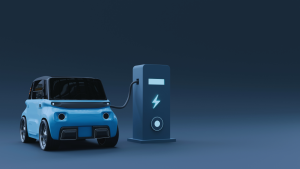How does the 2023 NEC address EV charging station island mode?
Overview
As EVPE (electric vehicle power equipment) and bidirectional EVSE (electric vehicle supply equipment) expand in their scope of connection to the grid, the NEC must match pace. With the interconnection of the electrical grid to the large battery bank held within an electric vehicle, a unique opportunity is presented. Island mode, which allows local microgeneration of localized power, is now addressed in new Section 625.49 in the 2023 NEC. This new section will help the electrical professional understand how systems are intended to interact with the interconnected power system, and how to further utilize specific equipment correctly and effectively.
battery bank held within an electric vehicle, a unique opportunity is presented. Island mode, which allows local microgeneration of localized power, is now addressed in new Section 625.49 in the 2023 NEC. This new section will help the electrical professional understand how systems are intended to interact with the interconnected power system, and how to further utilize specific equipment correctly and effectively.
Applying the 2023 Code
The 2023 NEC incorporates a new Section 625.49 in Article 625, which addresses electric vehicle power transfer systems. This new section addresses EVPE (electric vehicle power equipment) and bidirectional EVSE (electric vehicle supply equipment), and how they are permitted to be utilized in relation to interconnected power systems. It specifies that if the equipment incorporates a power export function, meaning that it can supply electric power to external loads, it is permitted to be part of an “Island Mode” power system. This means that in the event of a power outage, it is permissible to connect the appropriate equipment together to export battery power from the electric vehicle, and invert it into the local microgrid (such as an isolated dwelling unit). In other words, this section permits the appropriate equipment to draw power from an electric vehicle, and utilize it as a backup energy source for local interconnections.
What’s New for the 2023 NEC?
2020 NEC
In the 2020 NEC Section 625.49 did not exist
2023 NEC
In the 2023 NEC Section 625.49 now read as follows:
625.49 Island Mode.
EVPE and bidirectional EVSE that incorporate a power export function shall be permitted to be a part of an interconnected power system operating in island mode.
